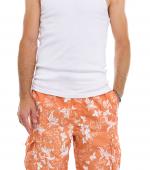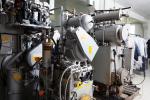CHICAGO — When deciding on equipment purchases for their drycleaning plants, or creating new plants, owners must keep many factors in mind, perhaps the most important of which is the geographic area that cleaner serves. By understanding the climate, demographics and industry around them, cleaners can ensure they are making the best choices possible for the future of their business.
What is the Climate?
Temperature and humidity are two of the biggest environmental factors to consider when operating a drycleaning plant, says Christopher White, executive director of industry consulting and plant design firm America’s Best Cleaners (ABC).
“The drycleaning process needs a certain degree of moisture, so one of the challenges that you face coming out of winter, for example, is that it’s very dry. And when it’s dry, you create a lot of static in your plants. With that static comes a lot of lint that affixes to garments that’s very hard to process and take off.”
White says that consulting with vendors and experts can help alleviate problems in this area.
“Work with your chemical partners for whatever drycleaning chemistry you’re using,” he says. “Making sure that you’re using the right dosages of detergents with a certain degree of moisture will not only help with stain removal but also help control the seasonality of that static buildup in your drycleaning machine that causes a lot of linting issues.”
Humidity in the finishing process, as well as in washing, is also an aspect that needs to be factored into calibrations.
“In the South, in the middle of the summer with 90% humidity, look at the flexibility of that finishing machine in being able to control the amount of steam and heated air you use,” White says. “If the garments are already at a saturation point of moisture, then I don’t need to run live steam on that garment — it’s already damp. I’m using more dry, heated air at a longer period to get the final finish.”
“As far as the machinery goes, we don’t have machines made for warm climates or cool climates — the machine is the machine,” says Vic Williams, Eastern sales manager of equipment manufacturer Union Dry Cleaning and the owner of Impressive Cleaners and Formal Wear in McDonough, Georgia.
But there are certain features, such as solvent heating and cooling, that can be useful depending on the cleaner’s climate.
“You’re not going to use heating as much in South Florida because you might wake up and it’s 80 degrees,” he says. “In upstate New York, though, it might be 50 degrees in the plant in the morning. In that case, solvent heating can maintain a better cleaning process.”
When the solvent is around 85-90 F, Williams says, it produces better, more reliable results: “Being able to heat and cool the solvent during the day allows you to maintain the same temperature from the beginning of the day until the end.”
Climate also plays a role in the preservation functions that many dry cleaners market, such as caring for wedding gowns.
“Say you’re in Seattle, where it’s super damp, and you are processing a silk wedding gown,” White says. “You go ahead and box that in your factory plant, where it’s humid with steam everywhere, and you are trapping a lot of moisture into that acid-free box. You should consider having a room that is air-conditioned and climate-controlled with the relative humidity that you want for optimal preservation of those garments.”
Of course, a lack of humidity can be its own issue, White says, referring to an ABC affiliate in Las Vegas.
“They still do tons of furs in Las Vegas, in the desert,” he says. “They have a climate-controlled vault where it’s perfectly stabilized all year round to maintain these expensive furs and leathers. They also process, clean and box wedding gowns in there, too, because it is so climate-controlled.”
Come back Tuesday for Part 2 of this series, where we’ll look at another critical element to use when determining your company’s needs — your customers.
Have a question or comment? E-mail our editor Dave Davis at [email protected].



















